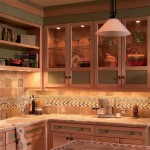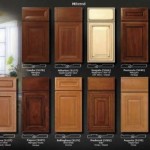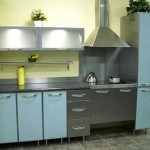Best Ways to Clean Grease From the Top of Kitchen Cabinets
The tops of kitchen cabinets are notorious for accumulating grease. This phenomenon arises from the constant cooking activities that release airborne oils and fats. Over time, these particles settle on the cabinet surfaces, especially those furthest from direct cleaning efforts. Neglecting this buildup can lead to a sticky, unsightly mess that attracts dust and is difficult to remove. Effective cleaning methods are essential to maintaining a hygienic and aesthetically pleasing kitchen environment.
The composition of kitchen cabinet finishes plays a significant role in determining the most appropriate cleaning techniques. Cabinets can be made of various materials, including wood (painted or stained), laminate, and metal. Each material reacts differently to cleaning agents. Harsh chemicals might damage certain finishes, while gentler solutions might be ineffective against stubborn grease. Therefore, a thorough assessment of the cabinet material is the first step in choosing a suitable cleaning strategy.
Safety precautions are paramount throughout the cleaning process. Wearing gloves protects the skin from harsh chemicals and prevents the transfer of dirt and grease. Eye protection is also advisable, especially when working overhead. Ensuring adequate ventilation by opening windows or turning on the exhaust fan minimizes the inhalation of fumes from cleaning products. A stable step stool or ladder is necessary to reach the top of the cabinets safely.
Preparation and Assessment
Prior to the actual cleaning, preparing the area is crucial. This involves removing any items stored on top of the cabinets, such as decorations or cookbooks. These items should be thoroughly cleaned separately before being returned. Covering the countertops and floor beneath the cabinets with drop cloths or old towels protects these surfaces from drips and spills. A preliminary assessment of the grease buildup will determine the severity of the cleaning required. Light grease accumulation might respond well to milder cleaning solutions, while heavy buildup necessitates more aggressive methods.
Gathering the necessary supplies is the next step. These typically include: cleaning cloths (microfiber is preferred), a soft-bristled brush or sponge, a bucket of warm water, a degreasing cleaning solution, a spray bottle, and paper towels for drying. The choice of degreasing solution depends on the cabinet material and the severity of the grease. Common options include dish soap, vinegar, baking soda, and specialized degreasers available at hardware stores.
Testing the chosen cleaning solution on an inconspicuous area of the cabinet is essential. This ensures that the solution does not damage or discolor the finish. Apply a small amount of the solution to a hidden area, such as the inside of a cabinet door or a back corner. Allow it to sit for a few minutes, then wipe it away with a clean cloth. If there is no adverse reaction, the solution is safe to use on the rest of the cabinets.
Effective Cleaning Methods
Several effective methods can be employed to clean grease from the top of kitchen cabinets. The choice of method depends on the severity of the grease buildup and the type of cabinet finish. The following methods offer a range of options, from gentle to more aggressive cleaning approaches.
Dish Soap and Warm Water: This is generally the safest and most versatile method for cleaning most cabinet finishes. Mix a few drops of dish soap with warm water in a bucket. Dip a microfiber cloth into the solution, wring it out thoroughly, and wipe the cabinet surfaces. Rinse the cloth frequently with clean water to remove the grease and avoid spreading it around. Dry the cabinets with a clean, dry cloth or paper towel to prevent water spots.
Vinegar Solution: Vinegar is a natural degreaser and disinfectant. Mix equal parts of white vinegar and warm water in a spray bottle. Spray the solution onto the greased surfaces and let it sit for a few minutes to loosen the grime. Wipe the cabinets with a clean, damp cloth. For tougher grease, allow the solution to sit longer before wiping. The vinegar smell will dissipate quickly. As with any cleaning solution, test it in an inconspicuous spot first.
Baking Soda Paste: Baking soda is a mild abrasive that can help remove stubborn grease. Mix baking soda with enough water to form a thick paste. Apply the paste to the greased areas and let it sit for about 10-15 minutes. Gently scrub the area with a soft-bristled brush or sponge. Wipe away the paste with a damp cloth and dry the cabinets thoroughly. Avoid using baking soda on varnished or polished wood surfaces, as it can scratch the finish.
Commercial Degreasers: If the grease buildup is particularly heavy, a commercial degreaser might be necessary. These products are specifically formulated to dissolve grease and grime. Follow the manufacturer's instructions carefully, as these products can be potent. Wear gloves and eye protection when using commercial degreasers. Ensure proper ventilation to avoid inhaling fumes. Test the degreaser on an inconspicuous area before applying it to the entire surface.
Steam Cleaning Steam cleaners can be a highly effective and environmentally friendly option for removing grease. The high-temperature steam loosens the grease and allows it to be easily wiped away. Use a steam cleaner with the appropriate nozzle attachment and follow the manufacturer's instructions. Be cautious when using a steam cleaner on wood cabinets, as excessive moisture can damage the finish. Keep the steam wand moving and avoid prolonged exposure to any one area.
Post-Cleaning Procedures and Maintenance
Once the grease has been removed, proper post-cleaning procedures are essential to maintain the cabinets' cleanliness and prevent future buildup. These steps involve rinsing, drying, and, in some cases, applying a protective coating.
Rinsing the cabinets with clean water removes any remaining cleaning solution residue. Use a clean, damp cloth to wipe down the surfaces. Ensure that all traces of the cleaning solution are gone to prevent streaking or discoloration. Pay particular attention to crevices and corners where residue might accumulate.
Drying the cabinets thoroughly is crucial to prevent water spots and potential damage, especially for wood cabinets. Use a clean, dry microfiber cloth or paper towel to wipe down the surfaces. Pay special attention to edges and seams where water can seep in. For wood cabinets, consider applying a wood polish or conditioner to protect the finish and prevent drying out. The frequency of polishing depends on the type of wood and the level of exposure to moisture and heat.
Applying a protective coating can help prevent grease and grime from sticking to the cabinets in the future. A thin layer of furniture polish or wax can create a barrier that repels grease and makes cleaning easier. Follow the manufacturer's instructions for application and buffing. Avoid using oily or greasy polishes, as they can attract dust and create a sticky residue.
Regular maintenance is key to preventing excessive grease buildup on the top of kitchen cabinets. Wiping down the cabinets with a damp cloth every few weeks can remove light grease and dust before it becomes a problem. Using the exhaust fan while cooking helps to vent airborne grease and prevent it from settling on surfaces. Periodically cleaning the exhaust fan filter is also important to ensure that it is functioning effectively.
Consider using shelf liners on top of the cabinets to protect them from grease and dust. These liners can be easily removed and cleaned or replaced as needed. Choose liners that are non-adhesive and easy to cut to size. Options include paper liners, plastic liners, and non-skid liners. Ensure that the chosen liner is heat-resistant if the cabinets are located near a heat source.
Proper ventilation is essential to minimize grease accumulation. Ensure that the kitchen is well-ventilated during and after cooking. Open windows or use the exhaust fan to remove airborne grease and moisture. Consider using a range hood over the stove to capture grease and smoke before they can spread throughout the kitchen. Regularly clean the range hood filters to maintain its effectiveness.
Promptly cleaning up spills and splatters is crucial to prevent grease stains from setting in. Wipe up any spills immediately with a clean cloth or paper towel. Avoid letting grease or food residue sit on the cabinets for extended periods. For stubborn stains, use a mild cleaning solution and gently scrub the area. Preventative measures, such as using splatter screens while cooking, can significantly reduce the amount of grease that splatters onto the surrounding surfaces.

How To Clean The Tops Of Greasy Kitchen Cabinets Secret Tip My Pinterventures

How To Remove Grease From Kitchen Cabinets 3 Methods Bob Vila

How To Clean The Tops Of Greasy Kitchen Cabinets Secret Tip My Pinterventures

How To Clean Sticky Grease Off Kitchen Cabinets Ovenclean

How To Clean The Top Of Kitchen Cupboards 4 Simple Steps Everyday Old House

How To Remove Greasy From Kitchen Cabinets Home Cleaning Tips

How To Deep Clean Kitchen Cabinets And Keep Them Looking Gorgeous Everyday Skate

How To Clean Sticky Grease Off Kitchen Cabinets

How To Clean White Kitchen Cabinets 3 Best Ways Avoid Abbotts At Home

How To Clean Greasy Cabinets In Your Kitchen
Related Posts








